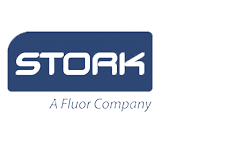

 Koen de Raad
Koen de Raad
 Michael Verhage
Michael Verhage
 Stijn van Geel
Stijn van Geel
Urban Farming - Dome Grown
We are Dome Grown. With a team of 4 and a bold vision for the future of self-sustainable cities, we don't focus on changing how buildings are constructed or on solving urban energy problems but we propose a concept, an idea, a vision of something that's of great importance, but most take for granted: food production. Our aim is to accelerate and integrate cultivation, called "Urban Farming", within the city limits and into the life of city dwellers. Right now almost 73% of all Europeans live in cities and peri-urban regions. This number is excepted to rise to 82% in the year 2050, in accordance with the rest of the world's population growth and demography. Food demand is increasing and contemporary agriculture is already strained and not durable in transport and production. We like to contribute to the change of where and how humans grow consumable plant products.
..
We, and thousands of already existing worldwide urban farmers, believe that cities and urbanized areas can support structures for the purpose of growing a substantial part of the city dweller diet -- up to 40%. ". We believe it can be done with new types of greenhouses, placed on rooftops and vacant lots. But we don’t use standard greenhouse design. We took a different path and designed two types of greenhouses from the ground up to accommodate for city environments. They’re; made from different strong and lightweight materials, innovative shaped design, cheap and durable. These greenhouses will provide a strong and unique environment for many consumable plant species, which we‘ll let thrive in a fully controlled and autonomous environment, right within the city limits. The dome is multipurpose: it can be used for keeping bees, as hubs for local algae production, education and in the cold winters of Scandinavia, the arid sands of Dubai or in polluted cities like Hong Kong due to its climate control. Besides 'growing' (Urban Farming), our technology can be used for 'living'. We design and create "geodesic domes" which inspire many people and business around the world to redefine homes and temporary environments. This concept can bind both worlds. We believe our technology can become an intrigued part of the cities of tomorrow. For more information visit: www.domegrown.nl














Douwe van den Wall Bake
30 maart 2017 om 08:23
Leuk om jullie gisteren ontmoet te hebben! Voor een proeflocatie zouden jullie ook eens moeten kijken naar www. Thegreenvillage. Org